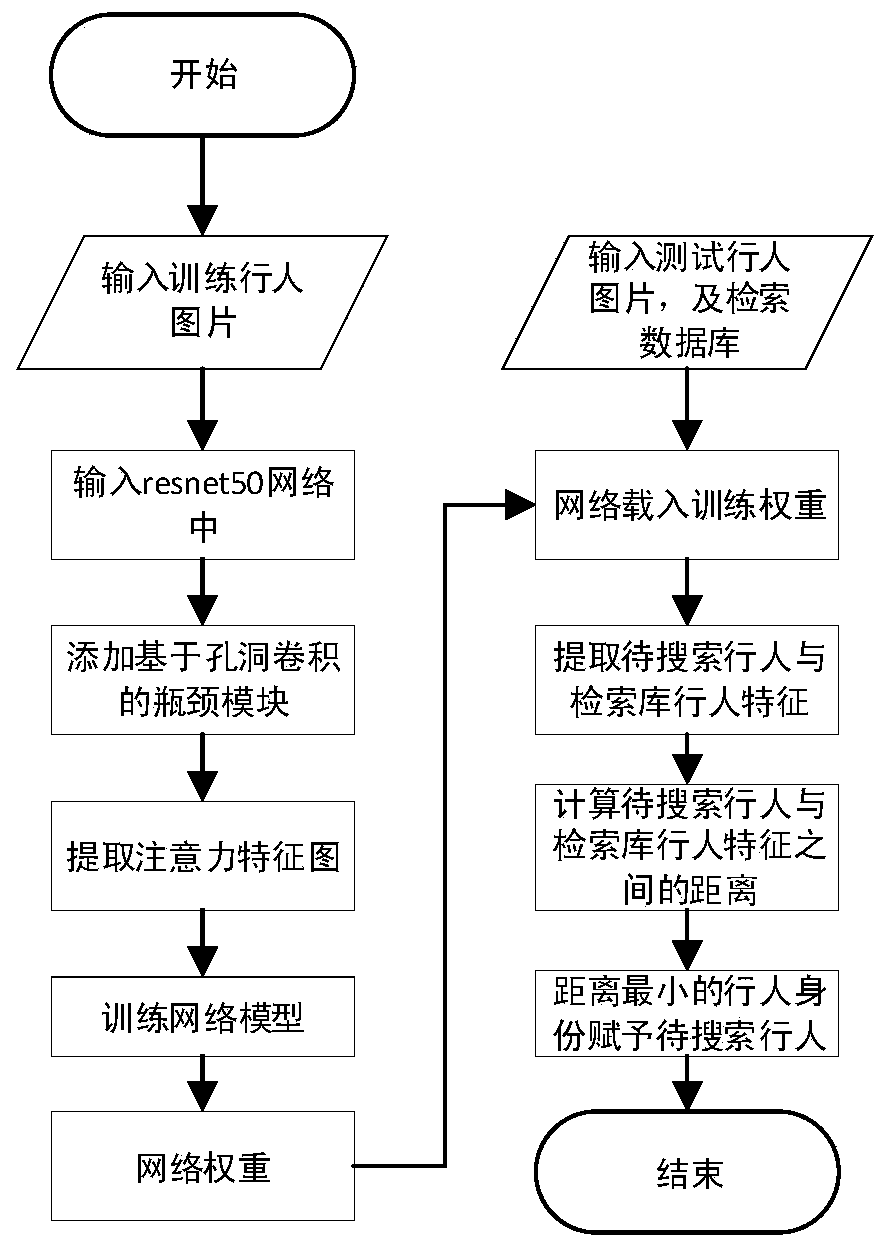A pedestrian re-identification method based on a hole convolution and attention learning mechanism
A pedestrian re-identification and learning mechanism technology, which is applied in the field of pedestrian re-identification based on hole convolution and attention learning mechanism, can solve the problems of poor practicability and achieve good practicability
- Summary
- Abstract
- Description
- Claims
- Application Information
AI Technical Summary
Problems solved by technology
Method used
Image
Examples
Embodiment Construction
[0037] refer to Figure 1-4 . The specific steps of the pedestrian re-identification method based on the hole convolution and attention learning mechanism of the present invention are as follows:
[0038] Step 1. Design a bottleneck module based on atrous convolution, and connect multiple bottleneck modules in series to form the final backbone network;
[0039] refer to figure 2 The atrous convolution module in will image 3 The 3x3 convolution in the bottleneck module in is replaced by atrous convolution. Hole convolution consists of three convolutional layers, using convolution kernels of 1x1, 3x3, and 1x1 sizes, respectively. The first 1x1 convolution operation reduces the number of channels of the input feature to a quarter, greatly reducing the number of parameters and improving the speed of the model. The second 3x3 convolution keeps the number of channels constant and learns the local structure information of the image. The third 1x1 convolution restores the numb...
PUM
 Login to View More
Login to View More Abstract
Description
Claims
Application Information
 Login to View More
Login to View More - R&D
- Intellectual Property
- Life Sciences
- Materials
- Tech Scout
- Unparalleled Data Quality
- Higher Quality Content
- 60% Fewer Hallucinations
Browse by: Latest US Patents, China's latest patents, Technical Efficacy Thesaurus, Application Domain, Technology Topic, Popular Technical Reports.
© 2025 PatSnap. All rights reserved.Legal|Privacy policy|Modern Slavery Act Transparency Statement|Sitemap|About US| Contact US: help@patsnap.com



